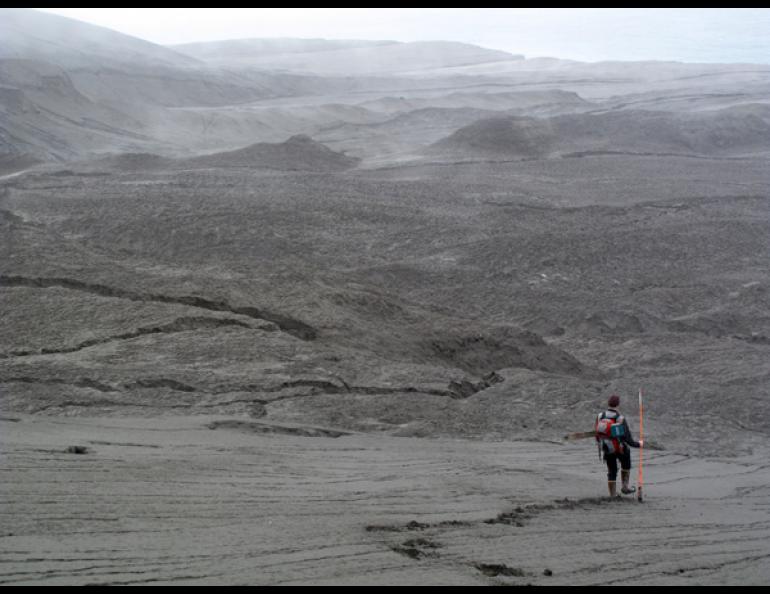
Eroding islands, disappearing glaciers, lots of greenhouse gases
The latest meeting of the American Geophysical Union in San Francisco in December 2011 featured hundreds of talks about Earth science, some of those relating to Alaska (and some of those comprehensible to a non-scientist). Here are a few items from the notebook I carried around the Moscone Center:
An Aleutian Island morphs at high speed: Chris Waythomas of the Alaska Volcano Observatory in Anchorage spoke of how Kasatochi Island in the Aleutians has changed in diameter since its explosive 2008 eruption. “Erosion by wave action has eaten away the coast at about (1,000 feet) per year. This may be a world record,” he said. That’s about three feet of shoreline disappearing every day.
Waythomas also noted that the northern part of the island has lost about 70 percent of the ash and mud deposited by the eruption four years ago, but that the ocean deposited much of it to the south end of the island. “It should be three or four more years until Kasatochi gets to its original size.”
Canada ice on the wane: Glaciologist Garry Clarke of the University of British Columbia said that the portion of the St. Elias Range in Canada will lose half its volume of ice by the year 2100, and almost all the ice in the north and central Rocky Mountains in Canada will be gone by then. “We’re going to be witness during the next century to the disappearance of glaciers in western North America,” Clarke said.
Double the midges on northern river: A second generation of midges hatched last summer along a stretch of the Kuparik River. Normally, only one generation per summer of the small flies emerges from that water, said Michael Kendrick of the University of Alabama. He said scientists once added nutrients to that section of river during a study, but he’s not sure if that, a longer ice-free season, or both made the midges spawn twice as many generations as before.
Atigun squirrels get a jump on summer: Brian Barnes of the University of Alaska Fairbanks’ Institute of Arctic Biology reported on two groups of ground squirrels that he and his colleagues have been studying for years on Alaska’s North Slope. Because of high winds in Atigun Gorge, a group of ground squirrels there has early access to leaves, berries and mushrooms that squirrels at snow-covered Toolik Lake do not have. “They don’t wait for greenup,” Barnes said of the Atigun squirrels, which emerge from hibernation two weeks earlier than Toolik squirrels. “Two weeks is a long time in the Arctic.”
We are still emitting too much carbon dioxide: James Hansen, the Director of NASA’s Goddard Institute for Space Studies in New York City, shared a message about carbon dioxide at a press conference. He said our releases of the greenhouse gas are “overwhelming.”
“The C02 we’re putting in the atmosphere by fossil fuel burning will stay in the atmosphere a long time before it can be put back into carbonate at the sea floor,” he said. “That tells us we cannot burn all of the fossil fuels (that remain to be extracted from the Earth). If we burn all the fossil fuels, we would send our planet back into the ice-free state . . . If we’re hoping to maintain a planet that looks like the one humanity has known, we’re out of time. We’ve got to turn (carbon dioxide emissions) around.”
This column is provided as a public service by the Geophysical Institute, University of Alaska Fairbanks, in cooperation with the UAF research community. Ned Rozell is a science writer at the institute.





